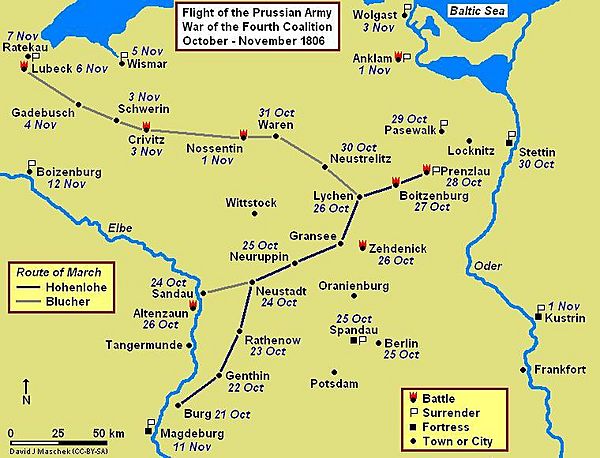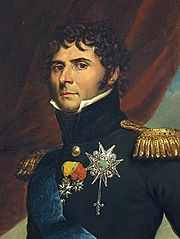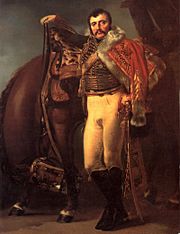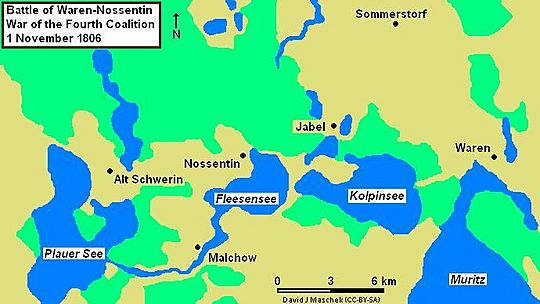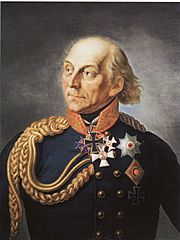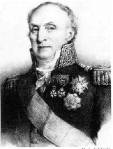Battle of Waren-Nossentin facts for kids
Quick facts for kids Battle of Waren-Nossentin |
|||||||
|---|---|---|---|---|---|---|---|
| Part of the War of the Fourth Coalition | |||||||
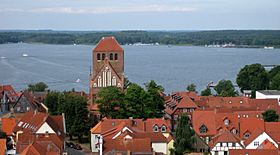 View of Müritz Lake from St. Mary's Church tower in Waren |
|||||||
|
|||||||
| Belligerents | |||||||
| Commanders and leaders | |||||||
| Strength | |||||||
| 4,000-5,000 4 guns |
12,000 | ||||||
| Casualties and losses | |||||||
| Waren: 26 Nossentin: Unknown |
Waren: over 46 Nossentin: Unknown |
||||||
The Battle of Waren-Nossentin was a fight that happened on November 1, 1806. It was part of the War of the Fourth Coalition. Soldiers from the Kingdom of Prussia, led by August von Pletz and Ludwig Yorck von Wartenburg, fought against troops from the First French Empire, commanded by Marshal Jean-Baptiste Bernadotte.
This battle was a "rear guard action." This means the Prussian soldiers were protecting the main army as it retreated. Even though the Prussians had to fall back, they successfully stopped the French from causing major damage or trapping any of their units. The battle took place near Waren (Müritz), which is about 70 kilometers (43 miles) southeast of Rostock in Germany. Nossentin is a small village about 15 kilometers (9 miles) west of Waren.
After the big Battle of Jena-Auerstedt on October 14, 1806, Emperor Napoleon chased the defeated Prussian army. By the end of October, many Prussian soldiers were captured near Prenzlau and Stettin. However, General Gebhard Leberecht von Blücher's army managed to escape by heading west. Near Waren, Blücher met up with another Prussian army. Together, they continued to retreat west.
As the Prussian rear guard left Waren, the first French cavalry attacked. This started a battle that lasted all day. Even though Marshal Bernadotte attacked strongly, the Prussians managed to get away safely after several clashes. Unlike some of their earlier fights, the Prussians fought very well in this battle.
What Led to the Battle?
The Battle of Prenzlau on October 28, 1806, was a big defeat for Prussia. General Frederick Louis, Prince of Hohenlohe-Ingelfingen and his 10,000 Prussian soldiers surrendered to Marshal Joachim Murat. More Prussian forces surrendered in the following days at places like Pasewalk and Stettin.
Since October 24, General Blücher had been in charge of Prince Hohenlohe's rear guard. Marshal Bernadotte, who led the French I Corps, heard about Hohenlohe's movements on October 25. He decided to follow the Prussians. Bernadotte's troops marched northeast, trying to catch up.
On October 30, Bernadotte learned that Blücher had turned back towards Neustrelitz. Bernadotte sent his cavalry, led by Colonel Étienne Maurice Gérard, to bother the retreating Prussians. Gérard's cavalry captured 400 soldiers and wagons. More importantly, they found out that Blücher was heading for Waren. That evening, Bernadotte's troops reached Burg Stargard.
On October 31, Blücher joined forces with General Johann Friedrich von Winning near Waren. Winning's army had missed the Battle of Jena-Auerstedt and had been following Blücher. Winning wanted to reach Rostock to the north and evacuate by sea. But Blücher changed the plan. He wanted to cross the Elbe River further west at Boizenburg. He hoped to meet up with other Prussian generals there. Blücher organized his army into two groups, or corps. Winning commanded about 11,000 men, and Blücher commanded 10,000. The Prussians had a very strong cavalry force.
Many French troops were chasing Blücher. Bernadotte had 12,000 soldiers with him. Other French forces, including Marshal Nicolas Soult's army and several cavalry divisions, were also in the area.
The Battle Begins
On the morning of November 1, the Prussians left Waren. Blücher moved northeast, protected by a rear guard led by General Friedrich Gottlieb von Oswald. Winning marched east, also covered by a rear guard under Oberst von Pletz.
That morning in Waren, a French cavalry unit, the 22nd Chasseurs à Cheval, led by Colonel Claude-Étienne Guyot, surrounded and captured 170 Prussian dragoons. However, when Guyot tried to push forward, Pletz counterattacked with 850 Prussian Köhler Hussar cavalry. The Prussian hussars pushed Guyot's cavalry back into Waren. They freed the captured Prussians and caused the French to lose several officers and many soldiers. This was a small victory for the Prussians.
After this, more French cavalry arrived in Waren. From 10:00 AM to 1:00 PM, French and Prussian cavalry skirmished (had small fights) on the edge of Waren. Meanwhile, the main Prussian rear guard, led by Yorck, took up a strong defensive position near the village of Jabel, between two lakes.
Historians say that while Pletz was the overall rear guard commander, Yorck was in charge of the fighting itself. Yorck had three battalions of fusiliers (infantry), six companies of jägers (light infantry), and 20 squadrons of hussars (cavalry). A French task force arrived, adding more cavalry to their side. They found Oswald's rear guard and prepared to attack, but Bernadotte called them back to Jabel.
The two sides exchanged artillery fire at Jabel for an hour. Then, Yorck pulled his troops back into the woods towards Nossentin. The French, led by the 9th Light Infantry Regiment, followed them into the woods. They met strong resistance from the Prussian jägers and fusiliers.
Eventually, Bernadotte's forces came out of the woods. They found Yorck's men waiting for them. The Prussian right side was protected by Fleesen Lake. Their center was in Nossentin village, and their left side was on marshy ground. Yorck placed his infantry in the front and his cavalry behind them.
After a French hussar regiment was pushed back from Nossentin, Bernadotte sent in General Jean-Baptiste Drouet, Comte d'Erlon's infantry division. This division had seven battalions. At the same time, Bernadotte tried to attack the Prussian left side with his cavalry. But the cavalry attack failed because of the marshes and ditches. However, Drouet's infantry managed to push Yorck's men out of Nossentin after a tough fight. During the cavalry attack, Bernadotte was even thrown from his horse. Yorck then retreated to Alt Schwerin, arriving there by 10:00 PM that night.
What Happened Next?
Bernadotte later claimed he fought 12,000 or more Prussians. But other estimates suggest the Prussians had only about 2,000 infantry and 2,000 cavalry, plus four artillery guns.
When Marshal Murat heard about the fighting at Waren and Nossentin, he changed his plans to go help Bernadotte. However, he soon realized that Bernadotte and Soult had joined forces and didn't need his help.
Historians believe the Prussians did well because of Yorck's smart leadership. He knew exactly when to pull his troops back before they were trapped. In his report after the battle, Bernadotte admitted that his enemies fought bravely. The French continued to chase Blücher's army until Blücher was finally defeated at the Battle of Lübeck on November 6.
|


